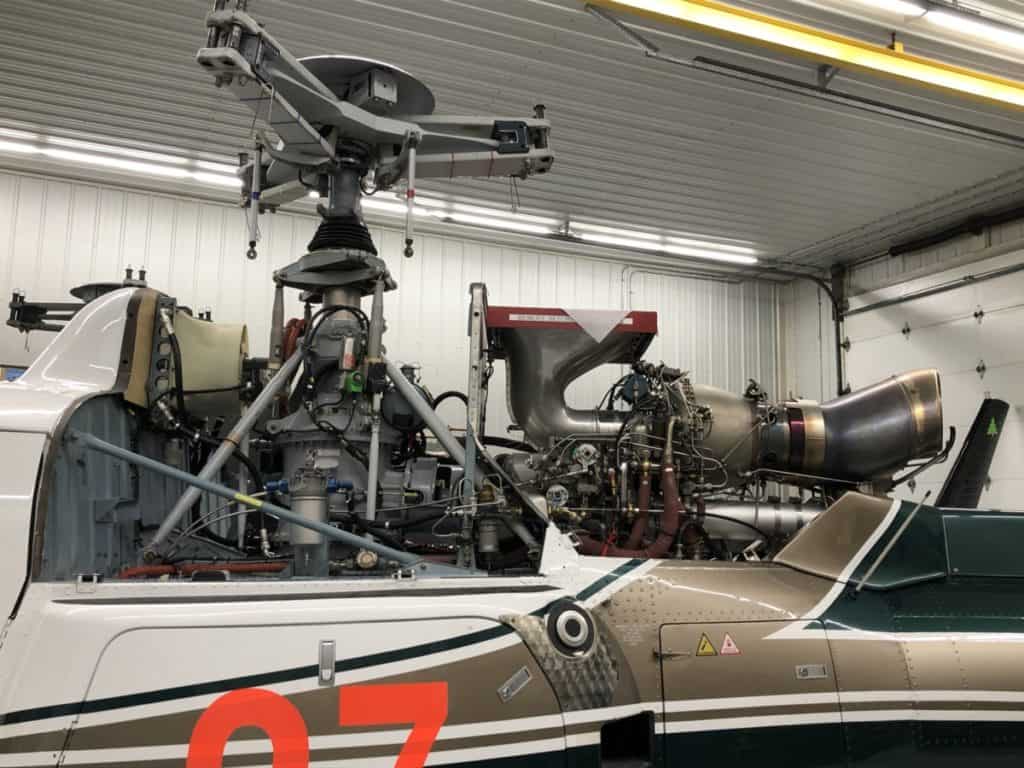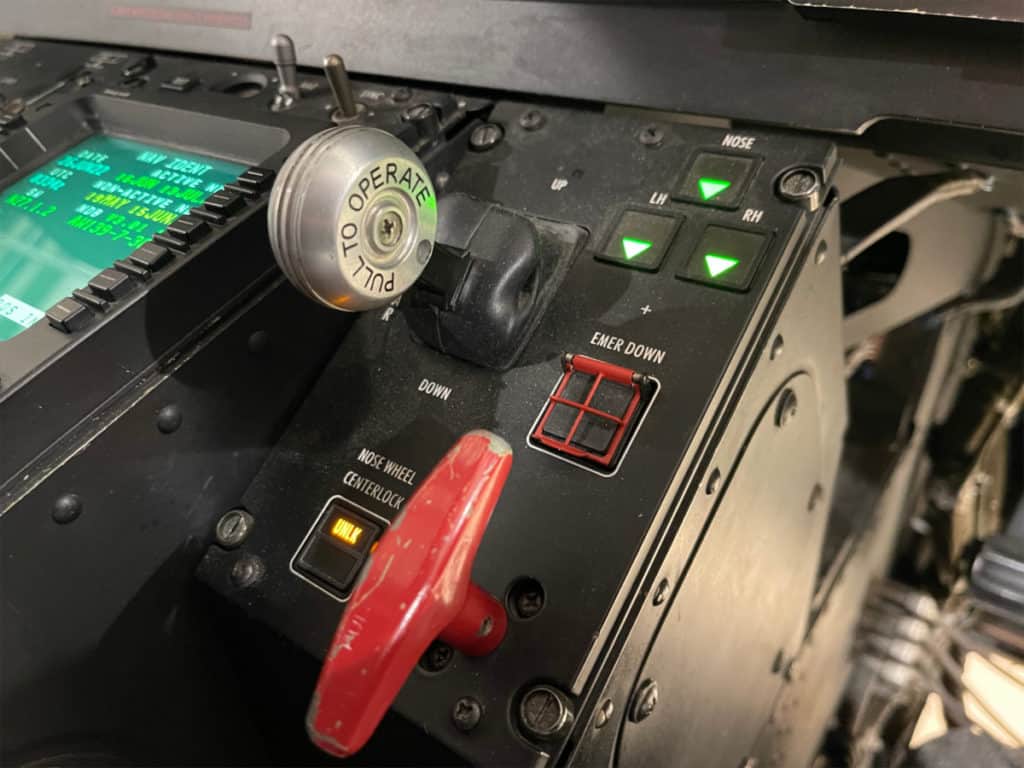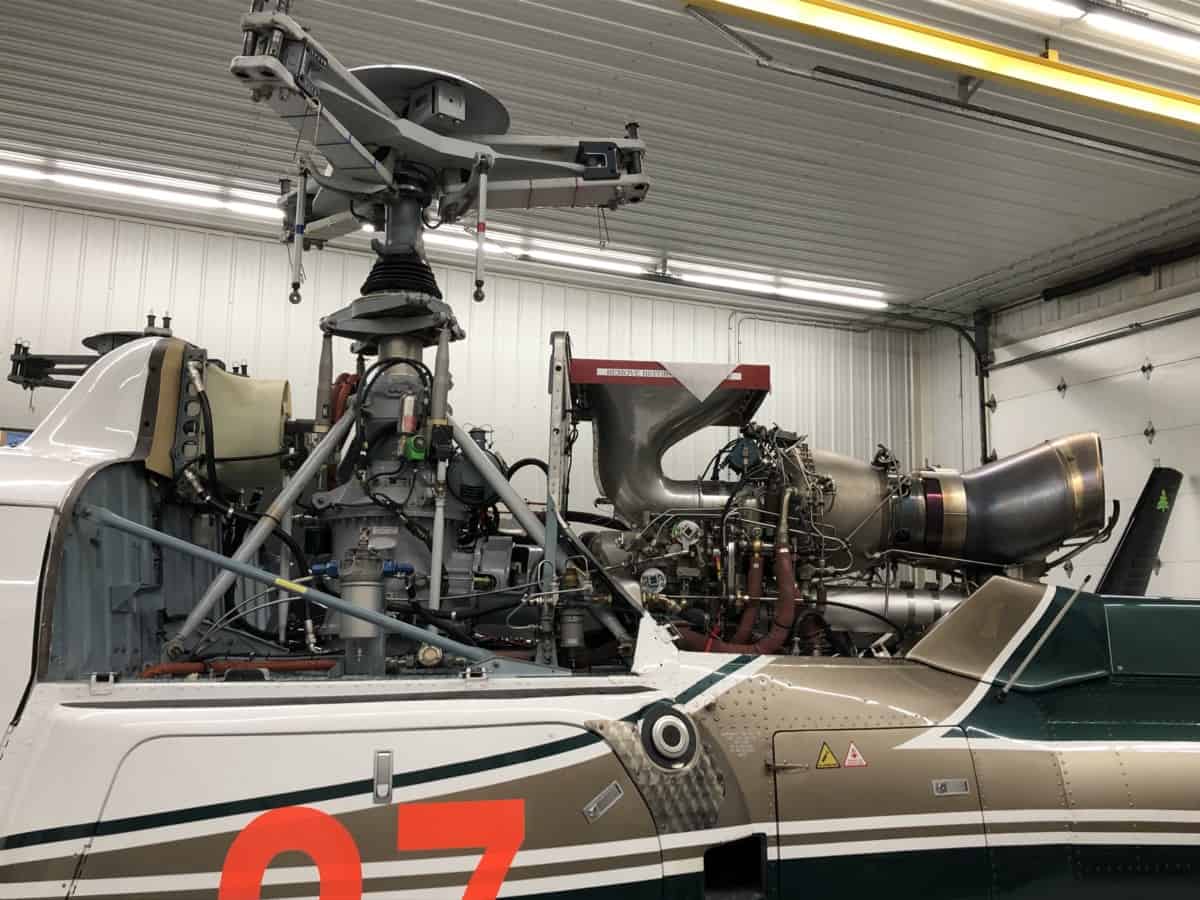
When I first began learning to fly helicopters the machine was very basic and simple to operate. This meant the flight controls I manipulated with my hands were connected directly to the main and tail rotor systems. For a long time I never even thought about hydraulics on a helicopter, but as I got further into my career I soon found out just how common and important hydraulics are on a helicopter, especially larger ones!
Helicopters use hydraulics primarily to move flight control surfaces like the main swashplate and tail rotor pitch slider in large helicopters where the control forces required to move them are high. Retractable landing gear, rotor brakes, and wheel brakes are also hydraulically powered if installed.
The article will help you understand just how hydraulics are used on helicopters and what happens if they fail!
Hydraulics on Helicopter Flight Controls
On helicopters with more than 4 seats, it can require 100’s lbs of force to move and control the rotor blades when in flight. Without hydraulics, a human does not have the strength to control a large helicopter. Hydraulics on helicopters is like power steering on your vehicle.
On small helicopters, a human can easily manipulate the controls and the forces placed on them by using mechanical linkages, bell cranks, and pulleys that have been designed with mechanical leverage.
As a helicopter’s rotor blades move through the air they are designed to create lift but also create drag. The larger the blade and the more rotor blades there are, the more these forces are created.
As a result, because of Newton’s Third Law of Motion – “For every action, there is an equal and opposite reaction” it means that forces are imparted back into the blades.
Changing the pitch of a large rotor blade can require immense force. More force than a human can impart into the cyclic, collective, or pedals.
To overcome this problem helicopter designers place hydraulic servos also known as actuators on each flight control linkage to boost the power of the pilots’ input.
As the pilot moves a control in the cockpit it moves a mechanical linkage. This linkage connects to a combination hydraulic valve/actuator (Servo).
As the pilot manipulates the collective, cyclic, or pedals the mechanical pushrods move a shuttle inside the hydraulic valve.

As the shuttle moves, it allows hydraulic fluid under high pressure to flow through into the actuator which moves the links connecting the swashplate or tail rotor linkage.
Smaller helicopters like the Bell 206 Jet Ranger or Airbus H125 Astar can be flown during a hydraulic system failure but it can take up to 100-110lbs of force to move a flight control in just one direction. Trust me, after practicing hydraulic failures in annual recurrent training your arms soon get tired! The trick is to get the helicopter to slow down and complete a running landing like an airplane without coming to a hover.
Trying to hover a helicopter without hydraulics is a surefire way to end up in a crash!
On large helicopters like the Sikorsky S92 or Leonardo AW139, the hydraulic system pressure is up to 3000psi, and without it, there is no chance of a pilot manually controlling the helicopter without hydraulics.
Because of such high forces required to move a flight control surface, there are multiple hydraulics systems that operate together but are completely separated in their fluid flow to ensure redundancy in the event that one of the hydraulic circuits develops a leak or has a malfunctioning component.
The multiple, independent hydraulic systems on the larger helicopters are designed so that flight control manipulation can still be achieved no matter what. Depending on the system design, the pilot may lose functions like powered tail rotor pedals or the use of repeated landing gear retraction/extension but by following the emergency checklist the pilot should have no issue in continuing flight or finding a suitable area to make a precautionary landing.
Learn More…
Try These Articles:
* How Do Helicopter Controls Work? Pilot Tells All!
* Helicopters: Loops, Rolls & Upside Down – Can They All Do It?
Typical Helicopter Hydraulic Components:
Small helicopters usually only have a single hydraulic system, but as mentioned, large helicopters can have 2,3, or even 4 independent hydraulic systems.
In each of these systems you will find the following components:
A Pump to supply system pressure. This is usually mounted to and driven by the main transmission and so long as the main rotor system is turning, the hydraulics are pressurized. Great during an engine failure!
A Hydraulic Filter to ensure no dirt is allowed to pass into the system and jam a valve or actuator.
A Distribution Manifold to distribute pressurized hydraulic fluid to all of the valves/actuators
A Cooling Radiator to keep the hydraulic fluid at the correct operating temperature when operating in hot environments.
Hydraulic Valves convert the pilots’ inputs into movements for the actuators to act upon.
Hydraulic Actuators to move the flight control linkages connecting to the swashplate and tail rotor pitch slider.
If equipped, a Tail Rotor Shutoff Valve is used to isolate the long hydraulic lines to the tail rotor actuator to save hydraulic fluid for the main rotor actuators in the event of a system leak.
If equipped, Accumulators are connected to each actuator and are pressurized with nitrogen to give the pilot a few control movements to get the helicopter into a safe flight condition when equipped with only a single hydraulic system.
Here is a great training video on the Leonardo AW139 hydraulic systems:
Hydraulics on Helicopter Rotor Brakes
On larger helicopters, with large rotor systems, the inertia they hold can be tremendous. Once landed and the engine/s are shut down it can take a long time for the rotor blades to stop spinning, especially if there is a breeze that keeps ‘Windmilling’ the rotor system.
For customers wishing to deplane and continue their journey, this is very inconvenient. To help slow the rotor system after shutdown many helicopters incorporate a rotor brake.

Join My Newsletter & Get Great Tips, Information and Experiences To Help You Become a Superb Pilot!
This usually consists of some form of friction clamping device on the main drive shaft or incorporated into the helicopter’s main transmission that when operated by the pilot will clamp down and rapidly slow the main rotor.
On large helicopters, a disc brake similar to your car brakes is used and this is operated hydraulically to close the brake pads onto the disk creating the required braking force.
This system is usually linked to a Rotor RPM or a Weight-On-Wheels sensor to ensure the system cannot accidentally operate during flight causing catastrophic consequences.
Hydraulics on Helicopter Retractable Landing Gear
For helicopters fitted with wheels, helicopter designers usually make the wheels retract and stow for flight. Doing so dramatically reduces the drag they would create and allows the top speed of the helicopter to be far higher and also reduces fuel consumption.

To operate the landing gear the pilot uses a handle in the cockpit which actuates a valve in one of the hydraulic circuits to raise and lower the nose and main landing gear. Pilots can confirm the gear is down and locked by the indication of 3 green lights next to the landing gear handle.
In the event the hydraulic system is unable to lower the landing gear many larger helicopters have a backup nitrogen system that can be fired to pressurize the hydraulic circuit and ‘blow’ the gear down and into position. The introduction of nitrogen into the hydraulic circuit will require attention from maintenance personnel before the next flight.
Hydraulics on Helicopter Wheel Brakes
For helicopters with wheels, pilots need to be able to bring the helicopter to a stop after taxiing and when parking the helicopter. To do this the pilot’s foot pedals have levers built into them which the pilot can press with their toes to hydraulically operate the brake systems on both the left and right main landing gear. The right pedal operates the right landing gear brakes, and vice-versa for the left.
To apply the ‘Parking Brake’ the pilot will operate the parking brake lever in the cockpit and then pump their toe levers to build up the required hydraulic pressure to ensure the parking brake is applied. Before taxiing away the pilots will disengage the parking brake and then use the toe brakes to help taxi and position the helicopter while on the ground.
Learn More…
Try These Articles:
* How Does Wind Affect a Helicopter? Pilot Tells All!
* Black Box Flight Recorders: Do Helicopters Have Them?


